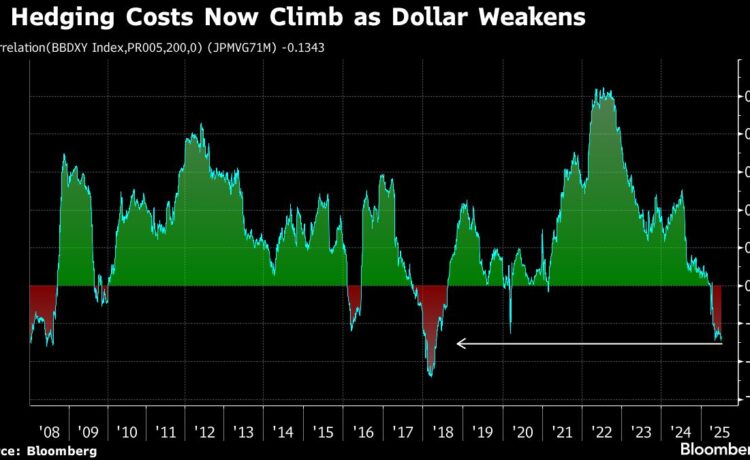(Bloomberg) — US dollar volatility may have settled down in recent weeks, but analysts at Goldman Sachs Group Inc. see plenty of reasons to think it may start trading like a “riskier” currency again.
Most Read from Bloomberg
Analysts Karen Reichgott Fishman and Lexi Kanter list elevated policy uncertainty related to trade tariffs and Federal Reserve independence, fiscal fears and diversification away from US assets as potential triggers.
A steep slide in the dollar this year triggered by President Donald Trump’s threats to impose harsh levies against global trading partners has fueled speculation about a permanent shift in the dollar’s status as a safe-haven asset. While the Goldman analysts don’t predict that will happen, things could still be pretty bumpy in the short term.
“Shifting correlations have left dollar strength in periods of risk-off a less reliable outcome,” the analysts wrote in a note published July 9.
By some measures, the dollar has continued to trade like a risky currency even as it has stabilized in recent weeks. Data compiled by Bloomberg show that the correlation between the greenback and a widely watched G-10 volatility gauge is near its lowest in seven years.
That signals that the dollar is behaving less like a haven and more like a source of volatility. For much of the past 15 years, the correlation was firmly positive. It also puts the long-standing market belief that hedging costs fall when the dollar weakens into in question.
What Bloomberg strategists say…
“The outlook for the dollar is negative over the long term for multiple reasons: less global trade, de-dollarization, re-setting of hedging ratios. Yet it has undeniably sold off a lot already, and markets rarely take the direct path to where they are ultimately going. A bounce is probably in order.”
— Simon White, Markets Live Strategist. Click here for the full analysis.
One of the most “striking” developments of 2025 has been the dollar’s increased tendency to sell off alongside US equities, the Goldman Sachs analysts said. The dynamic has occurred more than twice as often so far this year as over the prior 10 years, they said.
The “more concerning sign of reduced US asset appeal” — when equities, Treasuries and the dollar all fall together — has also been more common, according to the note.



